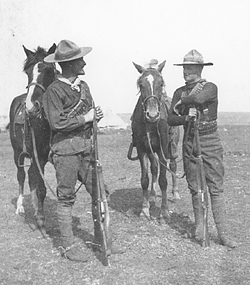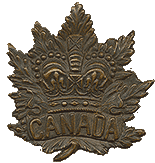Units
1st Battalion, Canadian Mounted Rifles

The North-West Mounted Police, with some 750 personnel, could field more trained mounted men than the regular army. L.W. Herchmer, commissioner of the force, offered to raise a unit of ‘picked police, ex-police and cowboys' to fight in South Africa. Ottawa accepted his offer when it decided to raise a second contingent for overseas service. The new unit recruited at North-West Mounted Police posts across the western territories in what are now the provinces of Saskatchewan and Alberta. Members of the police filled thirteen of the twenty officer positions, and made up roughly forty percent of the other ranks.
The battalion was originally named the 2nd Battalion, Canadian Mounted Rifles (CMR), but this was later changed to the 1st Battalion, CMR. The unit arrived at Cape Town on 27 February 1900, the day that the Boers surrendered at Paardeberg. Despite concerns that the war would end before the unit saw action, in March and April, it took part in the expedition to suppress a rebellion by Boers in the western Cape Colony before joining the march to Pretoria and beyond. While the battalion did well, it was hampered to a certain extent by changes in the ranks of its senior officers caused by battle casualties and the departure of the commanding officer, North-West Mounted Police Commissioner Herchmer, whose health broke down. He was replaced by Lieutenant-Colonel T.D.B. Evans, an officer from the Royal Canadian Dragoons. The battalion nonetheless distinguished itself on a number of occasions, and earned a reputation for aggressive scouting.
